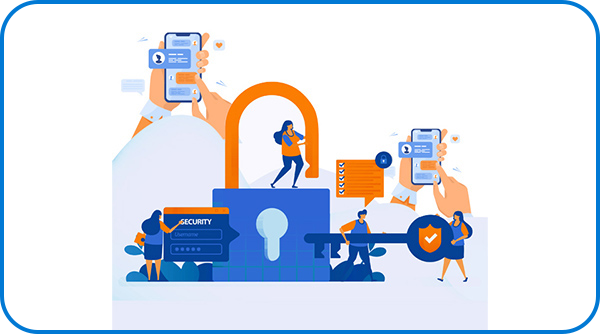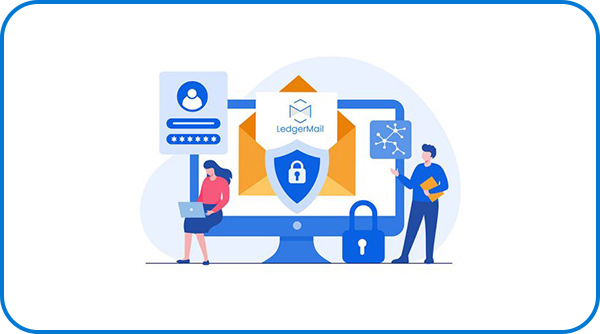Out with the Old, In with the New: Saying Goodbye to Outdated Email Protocols

Email is one of the most common ways of exchanging information, making it a prime target for cybercriminals. According to a study by IBM, 90% of all cyberattacks start with a phishing email. Secure email is an important part of ensuring the privacy and security of data and communications for both enterprises and individuals.
Legacy Email Protocols such as SMTP or IMAP, lack the security features necessary to protect against modern cyber threats, such as encryption and authentication, which can put organizations at risk of data breaches and other malicious activities. Additionally, Legacy Email Protocols are not designed to work with current web-based applications, making it difficult to integrate with modern business systems. Finally, Legacy Email Protocols can be difficult to maintain and support, making them a poor choice for organizations looking to reduce their IT costs.
It is important to say goodbye to Legacy Email Protocols because they are outdated and insecure.
Email protocols like SMTP and IMAP is not sufficient
Current email protocols like SMTP and IMAP are not sufficient to ensure the security of communications and data. These protocols were originally designed to enable simple message transfer and do not have any built-in security features. As a result, they are vulnerable to man-in-the-middle attacks, spoofing, and other malicious activities.
In addition, these protocols do not provide any encryption or authentication methods, making it easier for attackers to intercept and manipulate email messages. They also lack features such as digital signatures and non-repudiation, making it difficult to verify the authenticity of emails.
Secure email protocols like TLS and S/MIME provide stronger security features, such as encryption and digital signatures. They also provide authentication methods and non-repudiation, making it easier to verify the authenticity of emails. As a result, secure email protocols are necessary to ensure the privacy and security of data and communications.
Even TLS and S/MIME is not sufficient
Even TLS and S/MIME are not sufficient to ensure the security of data and communications. TLS and S/MIME provide encryption and authentication methods, but they do not prevent man-in-the-middle attacks or other malicious activities. They also do not provide features such as digital signatures and non-repudiation, making it difficult to verify the authenticity of emails.
In addition, TLS and S/MIME do not provide any protection against malicious attachments or malicious links in emails. This can lead to malware infections and data breaches. Furthermore, TLS and S/MIME are also vulnerable to phishing attacks, as attackers can spoof email addresses and bypass authentication methods.
Secure email protocols like PGP and DKIM are required to provide additional security features, such as digital signatures and non-repudiation. They also provide protection against malicious attachments and links, and can help detect and prevent phishing attempts.
Ah, but PGP and DKIM is also not sufficient
PGP and DKIM protocols are not sufficient for email security because they do not provide the same level of encryption and authentication as a closed loop secure email system. PGP and DKIM protocols are designed to provide encryption and authentication, but they are limited in scope and do not offer the same level of protection as a closed loop secure email system. Additionally, PGP and DKIM protocols do not protect against the spread of spam, phishing, and malware, which can be a major source of security threats. Finally, PGP and DKIM protocols do not provide the same level of control over access to emails as a closed loop secure email system, leaving organizations vulnerable to unauthorized access.
Closed loop secure email system is good for enterprises
A closed loop secure email system is good for companies because it provides a secure and private platform to communicate within an organization. It encrypts emails before they are sent, ensuring that only the intended recipient can read the message. Additionally, a closed loop secure email system allows for authentication, which helps to verify the identity of the sender and recipient of emails, further enhancing security. Finally, a closed loop secure email system can help to prevent the spread of spam, phishing, and malware, further protecting organizations from cyber threats.
Secure email to non-secure email communication or vice-versa is not good
Communicating with non-secure email from a secure email account or vice versa is not recommended, as it can lead to data breaches and other security issues. Secure email protocols like TLS and S/MIME provide encryption and authentication methods, making it difficult for attackers to intercept and manipulate emails. Non-secure email protocols do not provide any built-in security features, making it easier for attackers to eavesdrop on communications and access sensitive data.
Communicating with non-secure emails from a secure account can also weaken the security of the secure email service. This is because the secure email protocols may not be properly configured or may not be compatible with the non-secure email service.
Furthermore, non-secure emails can also be used to send malicious attachments and links, which can lead to malware infections and data breaches. Therefore, it is important to ensure that all emails sent and received are secure.
LedgerMail is good for enterprises
LedgerMail is good for enterprises because it provides a secure and private platform to communicate within an organization. LedgerMail replaces traditional, obsolete and cumbersome Email transfer protocols such as IMAP/SMTP with immutable, tamper-proof and revolutionary Blockchain Technology. LedgerMail encrypts emails before they are sent, ensuring that only the intended recipient can read the message. Additionally, LedgerMail provides authentication, which helps to verify the identity of the sender and recipient of emails, further enhancing security. Finally, LedgerMail can help to prevent the spread of spam, phishing, and malware, further protecting organizations from cyber threats. LedgerMail also includes features such as two-factor authentication and audit logging, which can further help to secure emails and protect against malicious actors.





